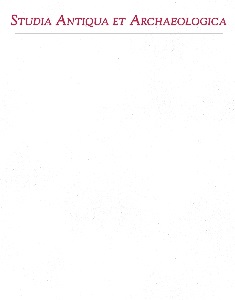Cucuteni C Type Pottery from the Chalcholithic Settlement Băiceni-Dâmbul Morii (Iasi County, Romania)
Cucuteni C Type Pottery from the Chalcholithic Settlement Băiceni-Dâmbul Morii (Iasi County, Romania)
Author(s): Radu-Ștefan BalaurSubject(s): History, Archaeology, Cultural history, Social history, Ancient World
Published by: Editura Universităţii »Alexandru Ioan Cuza« din Iaşi
Keywords: Cucuteni culture; phase A-B; Dâmbul Morii; type C ceramic;
Summary/Abstract: The archaeological research carried out in the Dâmbul Morii settlement led to the identification of 362 fragments of Cucuteni C type ceramic, either in the inventory of the dwellings or outside them. In the present study, we will discuss, based on these fragments, the manufacturing technology, the shapes and the decoration. Technologically, Cucuteni C type pottery was made from an inhomogeneous, coarse paste, which used crushed shells or crushed snails in the paste, mixed with large-grained sand, and less often crushed shards, pebbles or plant remains. In the Cucuteni A-B phase, there are also documented cases in which the pottery was made of a finer paste, without the crushed shell, of a reddish-brick color, with a mixture of sand, documented by the discoveries from Traian – Dealul Fântanilor.
Journal: Studia Antiqua et Archaeologica
- Issue Year: 28/2022
- Issue No: 2
- Page Range: 282-294
- Page Count: 13
- Language: English

